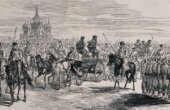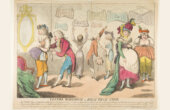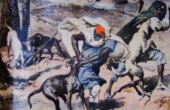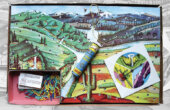The Weird, Wonderful History of Fairground Photography
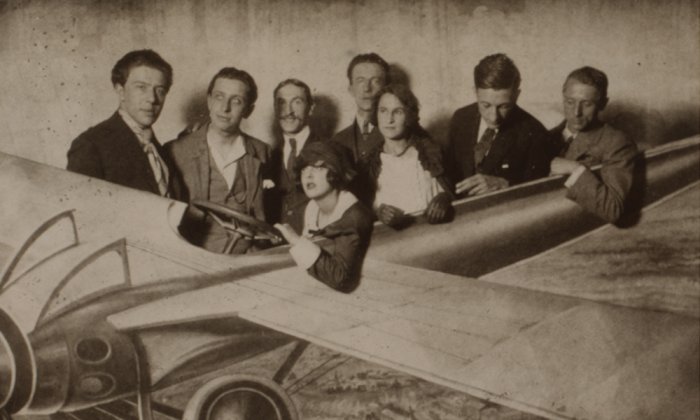
In the hierarchy of fairgrounds, photography was a minor attraction. Unlike the animal tamer, the freak show, and the fortune teller, the photographer was rarely an object of journalistic reports; his presence was merely mentioned, as would be the sellers of balloons and snacks.1 Disdained by professional portraitists — to whom he represented a form of competition that lowered prices, undermined their work, and discredited the entire industry — the fairground operator never attracted the interest of the photographic press.2 As a result, there is a great lack of documentation on the subject.
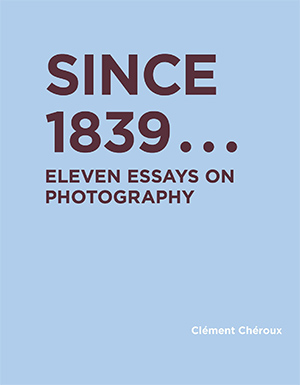
Archival sources are also rare. Since they were itinerant by nature, constantly moving from one place to another and limited by space and weight restrictions, fairground workers left few written testimonies or material traces of their activity. The few documents available in municipal archives are requests for sites, letters of complaint, and various rules or orders regulating activities.3 The photographic resources are also sparse. Once the portrait was handed over to the client, its negative (if there ever was one) was generally destroyed. Unlike in other fields where the medium was used, such as medicine and architecture, no collections of fairground photographs were made that might allow for precise analysis of this practice. There remain only the portraits themselves, crude images given to the clients that a few private collectors in recent years have brought together in more or less coherent collections.
The history of fairground photography in its early years was mixed with that of itinerant photography. In the first press articles after 1839 that mention an itinerant photographer, it is difficult to determine whether he was an independent operator — one who occasionally worked with fairs or festivals in order to profit from the fairgoers — or if he was part of the fair itself. After 1850 the distinction becomes clearer. On the one hand were the itinerant photographers who traveled through the towns, countryside, and holiday destinations, where they exercised their trade “out in the open.”4 On the other hand were “showmen photographers,”5 as Ernest Lacan called them, from the world of the fairground and who operated solely in that context. From the descriptions, their booths looked like any other fairground booth.
Unlike the animal tamer, the freak show, and the fortune teller, the photographer was rarely an object of journalistic reports.
In an article that appeared in 1858, La Gavinie described the Montmartre fair as follows: “The boulevards, the squares, filled up with onlookers who surrounded the merry-go-rounds, the skill and strength games, the swings, the four parts of the world, the wooden horses, and the acrobats and jugglers, the musicians from Alsace, the musclemen, the performing monkeys, M. Albus, M. Laroche, the sellers of waffles and of candy cane, the archery stand, and so on. Photography also had its booths amidst the two-headed serpents, the Bouthor circus, and the giant woman.”6 The business of portraits became a fairground activity among many others. In 1876 at the fairground of Neuilly-sur-Seine, a certain Delavacquerie proposed both a shooting stand and a portrait studio. Nine years later, the same person asked again for a space for his photography booth, but this time alongside a flea circus. In 1883 Weker created photographic portraits while at the same time holding a stand for shooting galleries. Five years later, Murat had a somnambulist’s wagon and a posing booth, and so on.7 Photography thus became an integral part of the fairground.
In the very first years, photography benefited from the curiosity and enjoyment of the fairgoers. It became a genuine attraction among others, in the purest tradition of those fairground demonstrations in which talented hucksters presented the latest scientific novelties, by adapting them to the conditions of the spectacle and to the onlookers’ taste for the marvelous. Very quickly, however, the public’s appreciation for fairground photography declined. There are several explanations for this quick reversal in opinion. First of all, it is probable that the increase in portrait studios during the 1860s contributed to channeling the novelty that fairground photography had enjoyed until then. The showmen also had difficulty competing in terms of quality with those of their studio counterparts, limited to what Alphonse Allais calls “a pure masterpiece of resemblance on metal.”8 “It was dark, it was blurred, it was awful,” wrote Ernest Lacan more bluntly.9
Beyond the poor quality of their products, operators of photography booths suffered from the bad reputation of the whole fairground enterprise, and were regularly likened to itinerant photographers, who were known for their dishonesty. In her well-documented article on itinerant photography in Great Britain, Audrey E. Linkman cites several verified cases of fraud by unscrupulous portrait photographers. According to Photographic News in 1879, some operators, after quickly pretending to take a photo, offered their customers a portrait in a little case, advising them to keep it closed for three or four hours until the chemical process was complete. If the image received any light at all before then, they said, it could disappear. Impatient customers who opened the case too early found no image at all, of course. And to customers who returned demanding another portrait, the photographer merely replied that they had been warned, then proposed that they have another photograph taken for a supplementary fee. Others waited patiently for the chemical process to finish, only to discover too late that they had been tricked, giving the photographer time to leave quickly.10
The unpopularity of fairground photographers was due less to such swindles (of which most operators could not be accused) than to their soliciting or touting. A letter from a fairground show-woman in 1907 describes the ungracious practices of the photographer Minette at the Neuilly fair: “There are three touts who block the way for passersby, choose the most gullible, force them or coax them into their shop. Then they begin to aim and adjust their cameras and come together to intimidate the person. And there is a tall woman who stands in front of the door to see if anyone is coming who might intervene. And when the touts have skinned their victims, the woman tells them to leave. Victims leave the booth sometimes in tears.”11 While this attitude was damaging to all fairground showmen, encouraging some of them to refuse to have a stand near a photographer, it was particularly unpleasant for the public. “The photographer is a parasite of the fairground and the torturer of the passersby,”12 wrote Jean Copain in 1897. To the credit of photographers, the profession became more and more difficult because of the growing number of operators. In 1873 there was only one photographer in the Neuilly fairground, while in 1886 there were 24.13 Touting was the consequence of this competition.
The fairground unions and public authorities, becoming increasingly aware of visitors’ irritation, acted quickly. In 1887 the Neuilly fairground commission reduced the number of photography booths to 12, then down to 10, and finally to four in 1914. In 1890 an administrative letter from the head of the Paris Police to the superintendent of the Roquette area, which hosted an annual gingerbread fair, stipulated that “photographers must be requested not to harass the public and warned that in case of complaints their permit would be withdrawn.”14 A later ruling stated that “photographers had to show their fees, on the outside and near the entrance to the establishments, followed by the words ‘no extra fees,’ all in clearly visible letters.”15 Another insisted that photographers be monitored “in a very special manner.”16 While they helped to reduce touting and to make photographers less offensive, the measures did not solve the profession’s structural difficulties.
Some customers waited patiently for the chemical process to finish, only to discover too late that they had been tricked, giving the photographer time to leave quickly.
At the end of the 19th century, competition among fairground showmen had been joined by a new form of competition: amateur photographers. This problem went far beyond the case of fairground workers to concern all portrait photographers. Since the 1880s, with the advent of gelatin silver bromide and the development of amateur photography, a few professionals had begun to worry about potential loss of part of their clientele. In their minds, this facilitated access to photography was encouraging not only a large number of amateurs to become portrait photographers, thereby increasing the ranks of competitors, but also, and above all, it encouraged an increasing number of clients to be content with portraits created by beginners, and thus to abandon patented photographers.
In his work on the history of photography studios, French historian Jean Sagne remarks that “exotic junk would soon become a commercial argument for portrait studios that wanted to keep a clientele that was demobilized by the practices of amateur photographers. New accessories, velocipedes, cars, planes, invade the studios.”17 At the very end of the 19th century, different kinds of portraits were being proposed by photographers. Studios now offered portraits with “artistic effects” or against backdrops chosen according to the customer’s fancy.
Since the early 1890s, several books had compiled for the interest of amateur photographers lists of different tricks for creating fanciful portraits more easily. These works on “amusement photography” explain, for example, how to create a shadow-puppet theatre or “living pictures.” They also suggested photographing oneself in distorting mirrors or drawing backgrounds showing quirky scenes where one had only to stick one’s head through a hole. They explained various ways for enabling people to photograph themselves or to transform their subject into a living statue, to deform it, or to multiply it. These recreational manuals, whose goal was to encourage amateurs to think outside the box,18 also offered to some studio photographers an opportunity to refresh their portrait collection.
The entire repertory of photographic amusements was not the object of this appropriation. Only certain recreations were adopted by professionals, namely those that remained within the limits of decency, without altering the resemblance very much, but offered something curious or amusing. It is possible, therefore, to find at the turn of the century studios that offered to photograph their customers between two mirrors against an openwork background, disguised, doubled, or multiplied. Facing the same competition, fairground photographers reacted as did the studio photographers. After a slight delay, but far more unanimously, in the 1910s (and even more so in the following decade) they adopted some of the models provided by recreational photographs. Limited by being itinerant photographers, and thus less well set up and equipped than studio photographers, fairground photographers utilized only the simplest recreations and those that used devices well-known to the profession.
The authors of recreational manuals proposed that amateurs stick their head through a hole in an openwork backdrop purchased in a store or made themselves. The sets used by the fairground photographers were more elaborate. Painted by them or by specialized companies, there were two different kinds. First there were scenes comprising one canvas panel pierced with one or several holes for customers to put their heads through. These panels to “poke your head through”19 (passe-têtes) generally created an amusing scene: a drunkard between two policemen, an act of adultery, a joyful dance, and so on. Photographers who possessed larger booths offered more complex scenes made up of two panels, a background and a foreground. These were more specifically devoted to means of transport such as airplanes, boats, or cars. Some fairground photographers offered both types of settings. A photo taken by Robert Doisneau at the Foire du Trône shows that the owner of “Photographie comique” possessed both an airplane scene and a genre scene. “For 60 centimes, MODERN PHOTO will photograph you, as an aviator, as Jesus, with the crown of thorns, AT NO EXTRA COST,” wrote Paul Morand in 1924.20
“For 60 centimes, MODERN PHOTO will photograph you, as an aviator, as Jesus, with the crown of thorns, AT NO EXTRA COST,” wrote Paul Morand in 1924.
In response to an injunction by the showman, the fairgoer entered the booth and then posed in the scene. The photographer had in front of him a tripod with a voluminous box on top that served as a camera for taking pictures, a darkroom for developing, and a reproduction stand. He operated in daylight or by using photo flash powder or electric light. Sensitive postcard paper was used as a negative. Once the photo had been taken, this paper negative was developed, then fixed, in a compartment behind the dark chamber that was made accessible by one or two handles. Using a small articulated arm that could be moved in front of the lens, the negative was re-photographed on another piece of postcard paper, which after treatment became the positive given to the customer.21 Postcard paper, which had spaces for a message, the address, and a stamp on the back, offered a twofold advantage. For the fairground photographer, it was the least expensive photographic paper on the market. For the customer, it made possible sending one’s portrait by mail, along with a few words. “Dear Uncle and dear Aunt. I am sending you our photographs so that you can see my face how ugly I am on it,” one young girl wrote.22
Appearing in the mid-1920s, shortly after the painted scenes, another attraction offered by the fairground operators was “photo shooting.”23 This was basically a shooting game, except that when the bullet touched the center of the target, it triggered a photographic mechanism that captured the shooter instantly with a flash. Rather than some unspecified prize, the customer won his own image as a shooter. In other words, he shot his own portrait. This photographic attraction was based on the “surprise shooting gallery” of the previous century, a “theatre in which the viewer directs the action with his gun,” as Walter Benjamin wrote.24 The historian Zéev Gourarier explains that “at the end of the nineteenth century, these games, which were widespread at the time, used the pressure of the winning bullet on a piston placed at the centre of the target, in order to trigger animated scenes. . . . After the shot, a woman who had been facing the customer until then turns around, showing her back and her skirt lifted up; firefighters then activate a pump and the waiter swaps heads with the marbled beef he was carrying on a tray.”25
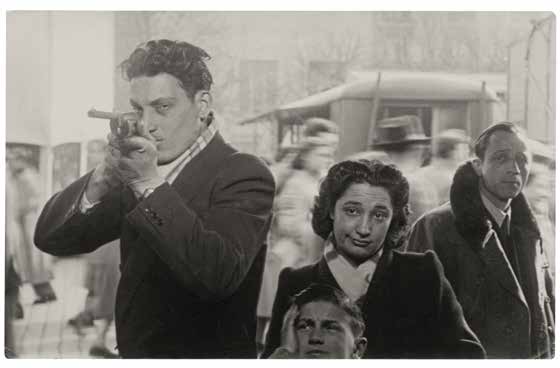
Also in the 1920s, and based on the same principle as the photo-shooting stand, another attraction consisted of guiding a miniature automobile along a circuit full of obstacles, using a steering wheel on the counter of the fairground booth. Whoever succeeded in crossing the finish line similarly triggered a photographic mechanism and took away as a trophy their own image as a winner. Unlike painted panels, which adapted the principles of photographic recreations to the conditions and the spaces of the fair, these games of skill came from a strictly fairground tradition. It was not recreation that became the attraction, but rather the opposite. After a few adjustments, the traditional shooting stands and racing stands were thus transformed into “fairground photographic games,” as documented by the specialized press of the time.26 Although ingenious and fascinating, these attractions were, however, much less widespread than painted backdrops.
It seems that the renewal of fairground photography was especially appreciated by the public, and it is easy to understand why. For those who indulged in it, generally with friends, fairground photography was above all an amusement, first during the taking of the picture and then, in the time of memory, while looking at the picture. But it would be wrong to think that was all. Those who introduced all or part of their body into the painted scene were, to a certain extent, stepping into someone else’s skin. The photography booth offered a chance to try out new experiences, to change clothes or physical appearance without changing one’s face. “Here is the temple of ‘imaginary lives,’” wrote Pierre Mac Orlan, referring to the compilation of fictional biographies that Marcel Schwob had published a few years earlier, where “everyone finds his secret desire, which the gracious photographer reveals to those who seek, within the images of thought, a situation that is more fitting to their hopes. The quiet couple above the overcrowded cities lives its dream of glory and of massacres. The good man with wavy hair confronts his apparent gentleness with the cries of the crowd and with the white light of the boxing ring, where the applause resonates like arteries or rattles like bones. We all go, with more or less taste, to the photographer of our choice. He dresses us in things that we would not even show to our own mirror.”27 Jean Sagne notes also that “the painted background acts like a screen, a place of projection.”28 While the scenery of the fairground photographer appears like a “place of projection,” it is also a space for social valorization, because, since it was printed on a postcard, the fairground photograph was made to be sent. It seems always to say “Have you seen me?” to its recipient.
A description of the photographer of the Foire du Trône, by the journalist Jean-Gérard Fleury in 1929, shows how much these portraits are always acts of showing: “In an airplane, in an ocean liner, on the Croisette in Cannes or the Promenade des Anglais in Nice, on the Esplanade des Invalides, at the top of the Eiffel Tower, let yourselves be photographed, sirs, let yourselves be photographed . . . with your ladies . . . Nice, Paris, Cannes . . . . You will never have travelled so much: for 6 francs it is the photography booth that will fly you over the Eiffel Tower, like Lindbergh the day after his transatlantic flight, or over the Côte d’Azur, like a wealthy islander.”29 Thus the choice of scene was never inconsequential. Means of locomotion, which were particularly common, were like exterior signs of wealth or adventure. They did not offer the customer the illusion of travel, but rather the illusion of being a traveler.
As a space for amusement, for projection, and for valorization, fairground photography needed little more to succeed. Beginning in the 1920s, the reputation of fairground photographers indeed seemed to have improved. Even if the quality of the portraits remained unsatisfactory, criticisms of fairground photography in general were rare. During the 20th century in the field of professional photography, the recreational portrait gained importance in France as a hallmark of fairground operators. In their photography booths, capturing a family resemblance was no longer the most important issue. Instead, fantasy was predominant. Nineteenth-century shop signs that promised a “guaranteed resemblance” were replaced by the promise of a “caricature” or a “funny” or “comic” photograph. These fantasy portraits were much more in line with the spirit of the fairground, which was a space for farces and illusions or, as Roger Caillois puts it, “a breeding ground for games.”30 The introduction of the recreational model into fairground photography allowed it, in short, to become better prepared for competition and, above all, gave it the opportunity to find its own playful identity.
Clément Chéroux is Joel and Anne Ehrenkranz Chief Curator of Photography at the Museum of Modern Art (MoMA) in New York. A photography historian, he has curated approximately 30 exhibitions and has published more than 40 books and catalogs. A longer version of this essay can be found in his book “Since 1839… Eleven Essays on Photography,” co-published with the Ryerson Image Centre, Toronto.
Notes:
- Significantly, the Tristan Rémy fonds at the Préfecture de police and those of the Actualités anciennes (series 89, 102, and 104) at the Bibliothèque historique (both in Paris), which contain different press cuttings on fairgrounds, do not include articles specifically devoted to photography at the fair. Surveys of a dozen fairground journals (L’actualité foraine, L’activité foraine de Toulouse et du Sud-Ouest, Forain-foraine, Le forain unitaire, L’industriel forain, L’intermédiaire forain, L’intermédiaire des forains et des exploitants de cinématographes, Le journal des forains, Le marchand forain, Le monde forain, Paris-forain, Le syndicaliste forain, La voix foraine) also did not reveal any articles on fairground photography.
- A systematic search of almost 200 photography periodicals that appeared between 1870 and 1914 yielded only two articles on fairground photography: A. Mahlinger, “Le photographe ambulant,” Photo pêle-mêle 156 (June 23, 1906): 198–99; and William A. Everard, “La photographie foraine,” Photo-revue (July 19, 1908): 20–21. For the period between the wars, an exploration of Photo-revue enabled me to find three articles on the subject: J. R., “La photographie foraine,” Photo-revue 11 (June 1, 1919): 81–82; C. F., “Appareil pour la photographie foraine,” Photo-revue (suppl.) 18 (September 15, 1927): 3–4; Jérôme Taxard, “Le ‘photographe ambulant,’” Photo-revue 20 (October 15, 1937): 315–17. From 1919 to 1929 Le photographe, la revue technique des professionnels, published nothing on the subject.
- The municipal archives of Neuilly-sur-Seine, a town northwest of Paris where the famous “Neu-neu” fair took place, are representative of this type of documentation.
- La Gavinie, “Chronique,” La lumière 31 (August 1, 1857): 123.
- Ernest Lacan, “Les saltimbanques de la photographie,” La lumière 20 (May 15, 1858): 77.
- La Gavinie, “Chronique,” La lumière 28 (July 10, 1858): 111.
- This information comes from the registers of the fair at Neuilly-sur-Seine, cited in Charpin, “Photographie et fête foraine,” vol. 2, 115–27.
- Alphonse Allais, “Le mariage manqué,” À l’œil (Paris: Librio, 1994), 114.
- Lacan, “Les saltimbanques,” 77.
- “Looking back,” Photographic News 23, no. 108 (November 28, 1879): 568–69, cited in Audrey E. Linkman, “The Itinerant Photographer in Britain, 1850–1880,” History of Photography 14, no. 1 (January–March 1990): 60.
- Letter from Mme Coquinet to the municipality of Neuilly-sur-Seine, cited [without reference] in Py and Ferenczi, “Marchands de portraits,” 255.]
- Jean Copain, “La vie foraine,” Le Figaro illustré, November 1897, 98.
- Charpin, “Photographie et fête foraine,” vol. 2, 115–24.
- “Lettre-circulaire du préfet de police,” Paris, April 19, 1890, Archives of the Police, documents on circuses, fairs, and fairgrounds, collected by Tristan Rémy, DB 202.
- “Ordonnance concernant les fêtes foraines,” Bulletin municipal officiel de la ville de Paris 184, August 9, 1929, 3833.
- “Lettre-circulaire du préfet de police,” 5.
- Jean Sagne, L’atelier du photographe, 1840–1940 (Paris: Presses de la Renaissance, 1984), 225.
- Albert Bergeret and Félix Drouin, Les récréations photographiques, 2nd ed. (Paris: Charles Mendel, 1891), 1. On this subject, see also Clément Chéroux, Avant l’avant-garde: Du jeu en photographie (Paris: Textuel, 2015).
- My thanks to François Cheval, former director of the Musée Nicéphore Niépce de Chalon-sur-Saone, for having brought my attention to this term. The equivalent English phrase, “poke your head,” was used by fairground photographers in Britain.
- Paul Morand, “Foire à la Floride” (1924), in Poèmes (Paris: Gallimard, 1973), 36; Pierre Mac Orlan, “Le photographe,” in Boutiques de la foire (Paris: M. Seheur, 1926), n.p.; Jean Cocteau, Orphée (Paris: Stock, 1927), 17; Raymond Queneau, Pierrot mon ami (Paris: Gallimard, 1942), 25.
- A very good description of this procedure appears in C. F., “Appareil pour la photographie foraine.” The Zilmo de Freitas collection at the Musée Nicéphore Niépce also offers several reports (photographic and audiovisual) on the manner of working by itinerant photographers who used the same technique.
- Written on the back of a fairground portrait printed on a photographic postcard, from a private collection in Paris.
- The oldest dated proof has “1926” written on the image. The first request for registration of a photo-shooting stand at the Neuilly-sur-Seine fairground dates from 1925.
- Walter Benjamin, One-Way Street and Other Writings, trans. J. A. Underwood (London: Penguin, 2009), 92.
- Zéev Gourarier, Il était une fois la fête foraine (Paris: Réunion des musées nationaux, 1995), 160.
- Published in Paris-Forain in 1927 and 1928, an advertisement for Ateliers et Laboratoires Magnésium offers, for example, patents and licences for “fairground photographic games” and the study and execution “of all games concerning photos.”
- Pierre Mac Orlan, “Le photographe,” in Boutiques de la foire (Paris: M. Seheur, 1926), n.p.; Marcel Schwob, Vies imaginaires (Paris: Charpentier, Fasquelle, 1896). The text by Mac Orlan was published again in 1990 with photographs by Marcel Bovis: Marcel Bovis and Pierre Mac Orlan, Fêtes foraines (Paris: Hoebecke, 1990).
- Sagne, L’atelier du photographe, 226.
- Jean-Gérard Fleury, “À la fête du Trône: Royaume des forains,” L’ami du peuple, April 3, 1929, evening ed., 4.
- Roger Caillois, “The Fair,” in Man, Play, and Games, trans. Meyer Barash (Champaign: University of Illinois Press, 2001), 132–36; Roger Caillois, ed., “La fête foraine,” in Jeux et sports (Paris: Gallimard, 1967), 711–16.
